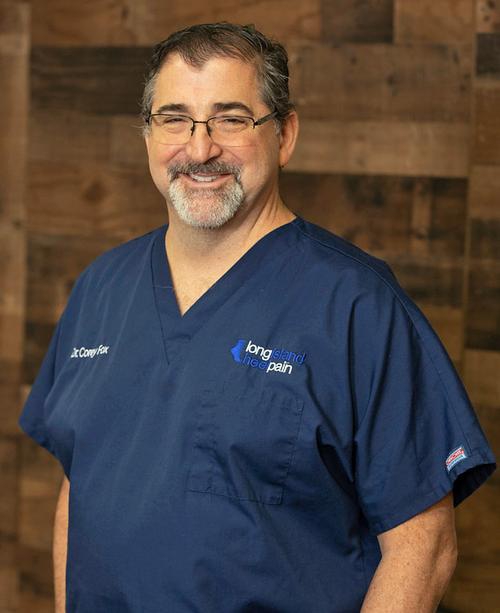Many common foot and ankle issues respond well to conservative treatments such as R.I.C.E., padding and taping, physical therapy, immobilization, and custom orthotics. However, when these methods don’t provide the desired results—and you want to avoid the extended downtime associated with surgery—an advanced foot and ankle therapies may be just the solution to your problem.
Massapequa Podiatry Associates proudly offers a wide range of revolutionary and minimally invasive treatments that utilize state-of-the-art equipment, technology, or techniques to stimulate the body’s own healing processes for a faster recovery. Here’s what you should know about the advanced therapies our practice offers and how our skilled podiatrists, Dr. Corey Fox and Dr. Justin LoBello, can help you get back on your feet as quickly, safely, and painlessly as possible.
4 Advanced Podiatry Treatments You Should Know
Step into a world of innovative foot care with these four advanced podiatry therapies, each designed to effectively address and manage common foot conditions.
1. MLS Laser Therapy
MLS Laser Therapy uses concentrated light energy to relieve pain and inflammation associated with acute injuries and chronic conditions. The patented and FDA-cleared Multiwave Locked System® (MLS) Laser synchronizes dual wavelengths with continuous and pulsed emissions to deliver controlled laser energy to a targeted site. This can improve circulation and increase metabolic activity within the cells, both of which can encourage the body to start healing the injured area. Noninvasive and painless, MLS Laser Therapy boasts an efficacy rate of up to 90 percent. Sessions can be completed in as few as 10 minutes, and you don’t have to worry about food or activity restrictions before or after the procedure. We use this revolutionary therapy to address pain and inflammation related to arthritis, tendinitis, plantar fasciitis, strains and sprains, sports injuries, neuropathy, and other podiatric problems.
2. Platelet-Rich Plasma Injections
Platelet-rich plasma (PRP) therapy is an innovative treatment for soft tissue injuries and other musculoskeletal concerns. We make PRP by spinning your blood in a centrifuge to concentrate the plasma and other beneficial compounds. Then, we inject it at the area of injury to increase platelets and other growth factors, which can help ease pain, reduce inflammation, and trigger a healing response. Because PRP therapy is minimally invasive and doesn’t require anesthesia, you don’t have procedure-related restrictions or downtime. Additionally, though no treatment works for everyone, approximately 85 percent of PRP patients report an improvement in symptoms after therapy. PRP injections can benefit patients with podiatric conditions such as strains and sprains, tendon issues, foot and ankle pain, plantar fasciitis, and various forms of arthritis.
3. Shockwave Therapy
Shockwave therapy, also known as extracorporeal pulse activation technology or EPAT, is a type of regenerative medicine (or orthobiologic therapy) that’s become a popular treatment option for podiatric patients. EPAT uses focused or radial shock waves—and sometimes a combination of the two—to relieve soft tissue pain and inflammation while spurring the body’s natural healing processes into action. It accomplishes this by increasing the blood flow and growth hormones in the injured area of the foot or ankle. Shockwave therapy isn’t painful, though some patients report mild discomfort during treatment. Sessions usually last between 15 and 20 minutes, and patients can often return to regular activity within 24 hours. The noninvasive treatment is particularly adept at promoting the healing of injured ligaments, tendons, and other soft tissues. We use it to treat plantar fasciitis, Achilles tendinitis, neuromas, sprains, and other conditions.
4. Tenex Procedure
Developed by Tenex Health in partnership with the Mayo Clinic, the Tenex procedure is a minimally-invasive, nonsurgical intervention for the treatment of chronic tendon, ligament, and joint pain. The procedure uses high-frequency ultrasound energy and a state-of-the-art tool that looks like a hollow needle—the patented TX Microtip—to break down and remove damaged tissue associated with podiatric tendon or ligament injuries. In addition to eliminating damaged tissue, the Tenex technique can also relieve pain and kick-start the healing process for a shorter recovery time. The procedure is relatively painless, thanks to a local anesthetic, and takes between 15 and 30 minutes to complete, with most patients resuming regular activities within a week to 10 days. At Massapequa Podiatry Associates, we use the Tenex procedure to treat heel pain, sports injuries, repetitive motion injuries, progressive weight-bearing injuries, and other conditions.
If You're Seeking Advanced Foot Therapy, Consider Reaching Out to our experienced Long Island Podiatrist
If you’re wondering whether you’re a good candidate for advanced podiatric therapy, complete our contact form or call 516-541-9000 to schedule an appointment with one of our experienced foot and ankle specialists.

.jpeg)
